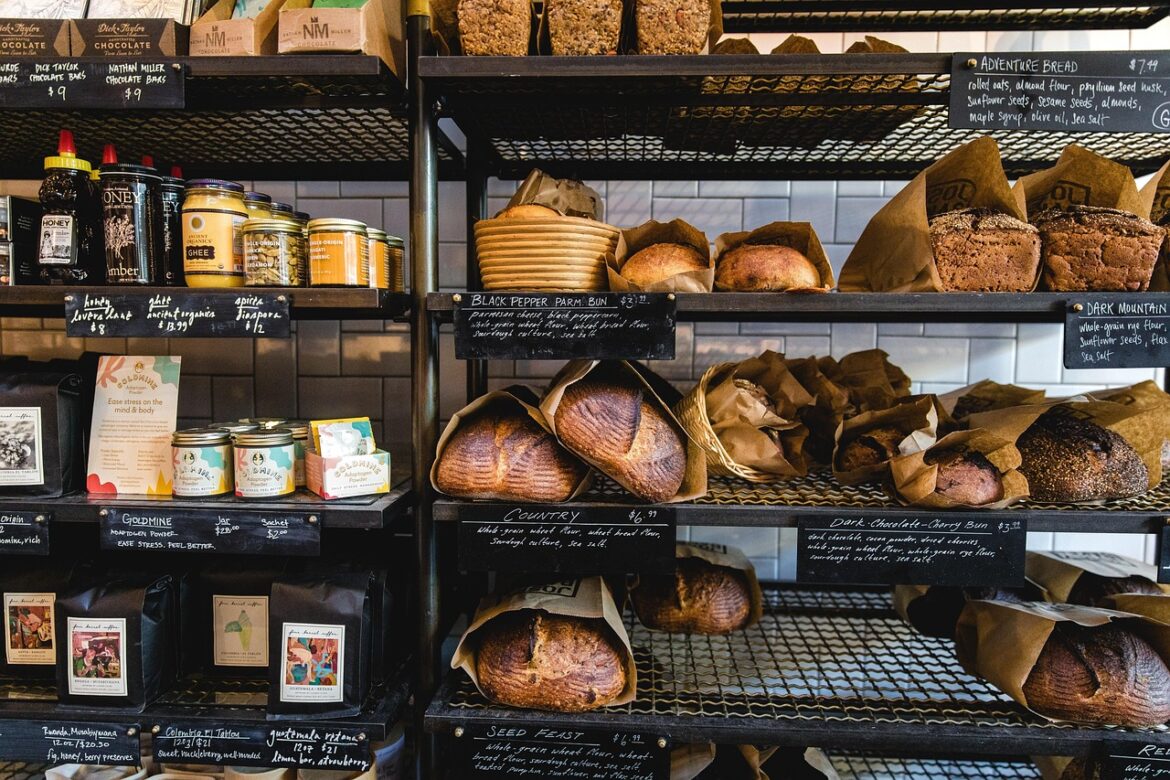Introduction to Grocery Design Trends
Imagine walking into a grocery store that feels more like a food hall, where you can grab a meal and socialize while you shop. This isn’t just a fantasy; it’s a reality that’s changing the way we experience grocery shopping. The latest trends in grocery design are all about creating engaging and personalized experiences for shoppers. Here are some of the top trends that are making waves in the industry.
1. Grocerant: The Food Hall Evolution
A grocerant combines the elements of a grocery store with a quick-service restaurant, offering a variety of prepared foods and becoming a hub for community gatherings. This concept is transforming grocery stores into places where people can meet, eat, and shop, making them more than just a convenient stop for ingredients[2]. The success of grocerants can be seen in stores like Whole Foods and Hy-Vee, which have been pioneering this concept for years.
2. Logo Design: Communicating Brand Identity
A grocery logo is more than just a visual representation; it’s a story about the brand’s values and identity. Trends in logo design include using creative elements like mosaic patterns to represent a variety of products, incorporating interactive or animated designs to engage customers, adopting vintage styles to evoke nostalgia, emphasizing eco-friendliness to appeal to environmentally conscious consumers, and reflecting local culture to build a strong community connection[6]. For instance, a mosaic basket logo could symbolize diversity and variety, while an animated logo could make the brand more memorable and fun.
3. Artisanal and Sustainable Branding
Consumers are increasingly drawn to artisanal and sustainable products, reflecting a desire for quality and authenticity. Artisanal and craft foods are gaining popularity, with small-batch productions and traditional techniques like fermenting and preserving becoming more mainstream[5]. This trend is not just about food; it’s about reconnecting with the origins of what we eat and the stories behind them.
4. Consumer-Centric Store Design
Modern grocery stores are designed with the consumer in mind, offering personalized shopping experiences through efficient layouts and digital integration. Stores are incorporating AI and data analytics to improve operations and customer satisfaction, ensuring that the shopping process is both efficient and engaging[4]. This includes using retail media to enhance customer interaction and loyalty.
5. Baby Food Design Revolutions
The baby food aisle is no longer just about convenience; it’s about transparency and developmental support. Brands like Little Bellies are focusing on clean ingredients, motor skill development, and even sensory play, reshaping the expectations of what baby food should be[3]. This trend reflects a broader shift towards wellness and mindful parenting, where food is not just nourishment but also a learning tool.
Conclusion
These trends in grocery design are transforming the way we shop, eat, and interact with food. From community-driven food halls to artisanal products and innovative baby food, the grocery landscape is evolving to meet consumer demands for more personalized and sustainable experiences. Whether it’s through creative logos, community-focused store designs, or sustainable practices, the future of grocery shopping is all about connection and authenticity.
References:
- https://www.preparedfoods.com/articles/130548-2025-us-grocery-shopper-trends
- https://www.chowhound.com/1863653/supermarket-trend-next-grocery-run/
- https://meetglimpse.com/trends/food-beverage-trends/
- https://groceryshop.com/agenda
- https://cookinggods.com/top-food-trends-from-x-in-2025-a-culinary-outlook/
- https://kreafolk.com/blogs/inspirations/grocery-logo-designs
- https://www.studocu.com/en-us/document/sophia-learning/operations-management/approaches-to-product-and-service-design-in-operations-management/125866598
- https://www.pinterest.com/harcon397/convenience-store/



